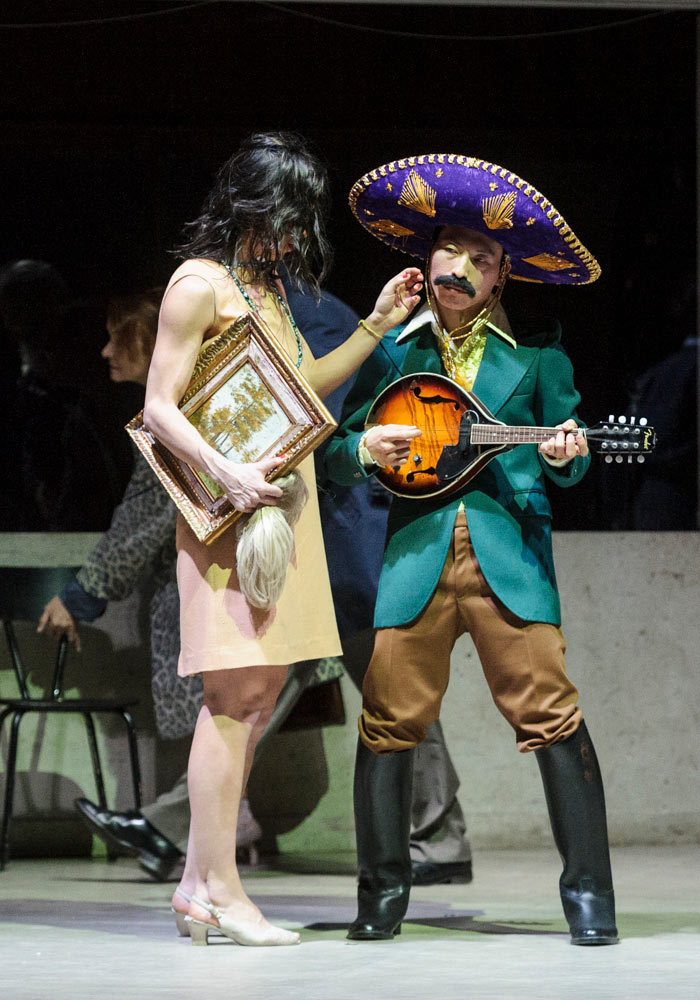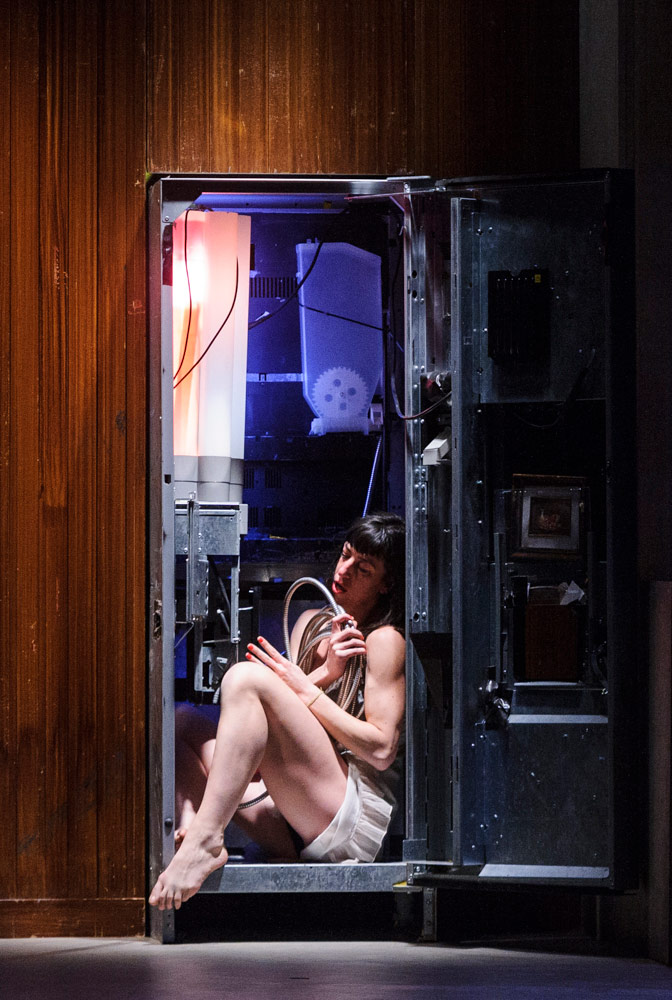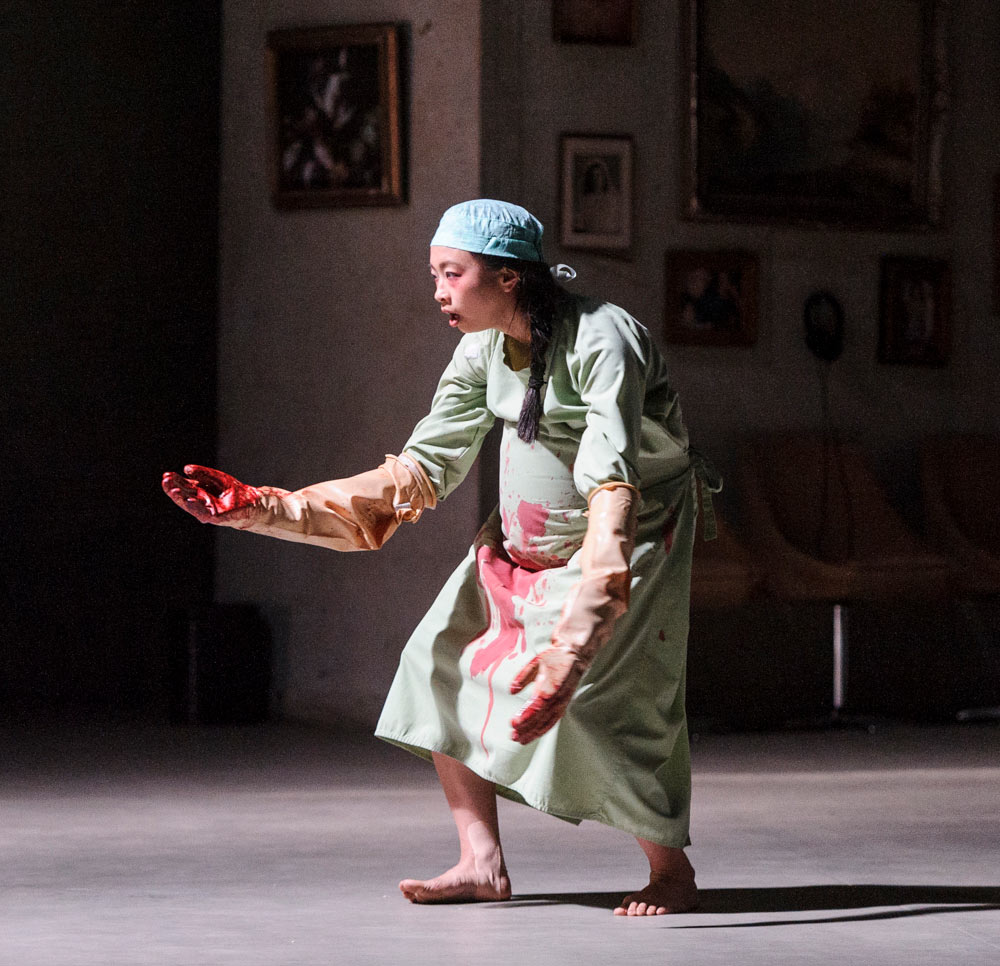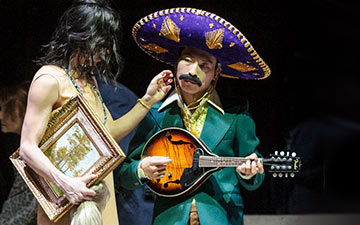
© Foteini Christofilopoulou. (Click image for larger version)
Peeping Tom
Mother (Moeder)
★★★★✰
London, Barbican
26 January 2018
Gallery of pictures by Foteini Christofilopoulou
peepingtom.be
barbican.org.uk
mimelondon.com
I am a Peeping Tom virgin, no longer; a phrase I never expected to write! The Brussels-based company, founded in 2000 by Gabriela Carrizo and Franck Chartier, makes occasional forays across the English Channel, the last of which – 32 rue Vandenbranden, directed by Chartier – won an Olivier Award, back in 2015. Somehow, despite reviewing hundreds of shows, each year, I have always contrived to miss them!
Mother is the second instalment of a trilogy, which began with Father (Vader), also directed by Chartier, which premiered, in May 2014; Mother followed, directed by Carrizo, in 2016; and the trilogy will be completed by – unsurprisingly – Child (Kind), which is scheduled for the spring of 2019. So far as I can see, it matters not a jot that I missed the first part of the trilogy since Mother appeared to be a complete work that neither led from, or to, anything else.

© Foteini Christofilopoulou. (Click image for larger version)
Paying audiences come across dance in many forms, amongst which are pure dance, dance theatre, physical theatre and theatrical circus. On this solitary piece of evidence, Peeping Tom seems to specialise in a hybrid of challenging entertainment that connects all of these forms of theatre and much more besides. Mother has a strong sense of theatre with elements of black humour, horror, dance, magic and song.
The setting is an art gallery, which doubles as a family home and has a strange multi-purpose recording studio set into it which also served as a hospital/morgue/funeral parlour/maternity unit/and operating theatre; sometimes, approximating more than one of these at the same time.

© Foteini Christofilopoulou. (Click image for larger version)
My companion declared herself to be traumatised by the elements of horror, including a painting of a heart, which bled; and another from which a human head emerged to feed on the arm of a visitor who took too close an interest. These moments of darkness were offset by several striking episodes of black comedy. A male performer – Hun-Mok Jung – stood motionless, as if a Jeff Koons’ acrylic statue, back to the audience, dressed only in a thong, crouched in a position not unlike a sprinter at the “on your marks, set” stage of preparation, with a single leg placed inside a tilted, open coffin for a work of art entitled ‘One Foot in The Grave’.
Having kept this stillness up to the extent that one believed he was a statue; Jung is left alone with the cleaning lady (an engaging dead-eyed performance by Charlotte Clamens) who – having polished his thighs and buttocks – succumbs to some lustful urges, which are thankfully interrupted! The “statue” is then told that the gallery is closed and suddenly leaps from the coffin, entangled in the vast polythene sheet used by the cleaner to cover “him/it” for the night; and into a visceral, violent, struggling, acrobatic solo. When Jung finally detaches himself from the plastic, the “statue” clocks off for the night, uttering an expletive to the effect that he hates his job! Further odd chores and the expletive-ridden departure of Jung’s character become a nightly leit-motif throughout the performance.

© Foteini Christofilopoulou. (Click image for larger version)
We witnessed the death rattle of an elderly woman to open the work and then the birth of a baby who immediately transformed into a 7-year-old, still entombed within an incubator. We also experienced perhaps the most bizarre love affair ever seen on stage with an attractive woman falling for – and sensually caressing – a coffee vending machine, which, having absorbed said woman into its interior, unsurprisingly “dies”; no more to dispense another espresso. A woman steals a painting, which she conceals like a square pregnancy bump inside her skirt: the museum owners, a father (Simon Versnel) and son (Brandon Lagaert) and their staff are reluctant to confront her and a strange ritual dance ensues.
This brings me to the question of dance. Spoken text dominated the work but when the dance came, it was never short of extraordinary. Early on, after the recording studio death, the audience experienced a remarkable sleight of the senses: we heard water, absolutely synchronised with the movements of the people on stage. Steps equalled sploshes and then Maria Carolina Vieira (an Olympian from the Sydney Games) slid around the floor as if on a slippery wet surface, a gymnastic performance perfectly in time with the watery sounds; her seemingly uncontrolled movements becoming more frantic as she failed to gain purchase, being sucked into the water. It was a stunning sequence and there were many other similarly outstanding movement episodes by these excellent performers. Lagaert and Jung demonstrated impactful muscle isolation in their hybrid of gymnastics, hip-hop and contemporary movement. Yi-Chun Liu and Marie Gyselbrecht were the two women who provided many of the memorable movement moments and Eurudike De Beul was a haunting onstage opera singer.

© Foteini Christofilopoulou. (Click image for larger version)
Mother was an absorbing 70 minutes of performance art. Mothers were never exactly to the fore and yet – in many respects – they were always apparent; dying, giving birth, perennially visiting a child in hospital, often spoken about and somehow evident amongst the company of elders who supplemented the eight-strong professional ensemble. It was often a visual feast, always challenging, sometimes funny, never dull, but occasionally the ideas were hard to grasp (and hard to see, in a production that was often dimly lit).

















You must be logged in to post a comment.